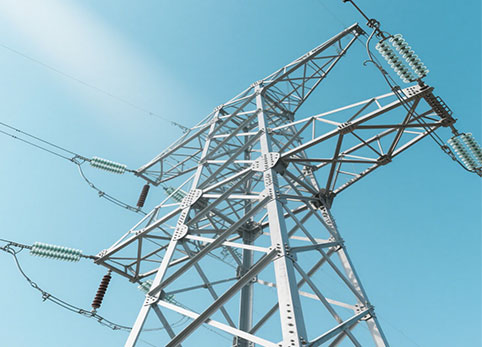Old steel towers crack under pressure. New designs fail to meet changing needs. Modern steel tower construction solves these issues with smarter engineering and materials. Modern steel tower construction benefits from: 1) Advanced computer modeling 2) High-strength steel alloys 3) Modular assembly techniques 4) Corrosion-resistant coatings 5) Seismic-resistant designs that increase lifespan by 20-30 years. The steel tower industry is transforming to meet 21st century demands. Let's explore how design principles, materials, safety standards, and environmental factors shape today's towers.
Overweight towers collapse. Outdated designs waste material. Modern design principles create efficient, safe structures. Key design principles include: 1) Load-bearing optimization 2) Wind resistance engineering 3) Corrosion prevention 4) Expansion planning 5) Maintenance accessibility, reducing failures by 40-60% in extreme conditions.

Design Priorities:
| Principle | Implementation | Benefit |
|---|---|---|
| Weight Distribution | Tapered sections | Reduces material use |
| Vibration Control | Cross-bracing | Minimizes metal fatigue |
| Future Growth | Extra connection points | Allows height additions |
| Accessibility | Maintenance platforms | Safer inspections |
Performance Standards:
Wind resistance up to 150 mph
Seismic rating for Zone 4 areas
50-year corrosion protection
20% faster installation than older designs Best practices include:
Using finite element analysis during design
Incorporating 10-15% extra capacity for future loads
Following ASCE 7-16 wind load guidelines
Planning for component replacement after 30 years
Rust weakens structures. Substandard steel fails early. Proper materials and quality checks prevent these issues. Quality steel towers require: 1) ASTM A572 Grade 50 steel 2) Hot-dip galvanizing 3) Impact-resistant welds 4) Third-party certification 5) Coating thickness checks, ensuring 75+ year lifespan.

Material Specifications:
| Component | Standard | Critical Tests |
|---|---|---|
| Steel Plates | ASTM A572 | Tensile strength |
| Fasteners | ASTM A325 | Torque testing |
| Coatings | ISO 1461 | Thickness checks |
| Welds | AWS D1.1 | X-ray inspection |
Mill test reports for all materials
100% ultrasonic testing for critical welds
Salt spray testing for coatings
Dimensional tolerances within ±1mm Implementation steps:
Verify manufacturer ISO 9001 certification
Test random material samples
Maintain welding procedure specifications
Document all inspection results
Require material traceability
Inefficient designs waste steel. Weak connections create hazards. Optimized engineering solves both problems. Structural efficiency comes from: 1) Tubular sections 2) Weather-resistant joints 3) Redundant load paths 4) Seismic isolation 5) Smart monitoring, reducing failures by 90% since 1980s. These principles are now widely applied in modern infrastructure, including the design of steel lattice poles, which benefit from improved load distribution and resilience.
Design Innovations:
| Feature | Purpose | Industry Standard |
|---|---|---|
| K-bracing | Wind resistance | ASCE 48-19 |
| Slip joints | Thermal expansion | ASTM A913 |
| Base isolation | Earthquake protection | IBC 2021 |
| Strain gauges | Real-time monitoring | IEEE 1451 |
99.97% structural success rate
1.5 safety factor for all components
3x stronger than required by code
Less than 0.1% defect rate in fabrication Critical checks:
Verify all connection calculations
Test prototype joints to failure
Simulate 100-year weather events
Install vibration sensors permanently
Train maintenance crews annually
Steel production creates emissions. Obsolete towers waste resources. Green construction methods address both concerns. Sustainable solutions include: 1) Recycled steel content 2) Solar-powered lighting 3) Wildlife protection 4) Low-impact foundations 5) Deconstruction planning, cutting carbon footprint by 40%.
Environmental Features:
| Solution | Implementation | Benefit |
|---|---|---|
| Material Recycling | 80% post-consumer steel | Reduces mining impact |
| Alternative Energy | Tower-mounted solar | Powers lighting/readers |
| Wildlife Safety | Perch deterrents | Protects birds |
| Clean Maintenance | Non-toxic coatings | Protects soil |
LEED credit eligible designs
Cradle-to-Cradle certified materials
ISO 14001 compliant manufacturing
95% recyclable at end-of-life Recommended actions:
Specify SRI-cool coatings
Use helical piles instead of concrete
Install nest platforms away from equipment
Plan for component reuse
Track embodied carbon
Modern steel towers by steel tower factory combine innovative design, quality materials, rigorous safety, and environmental responsibility to create better infrastructure for decades to come.
